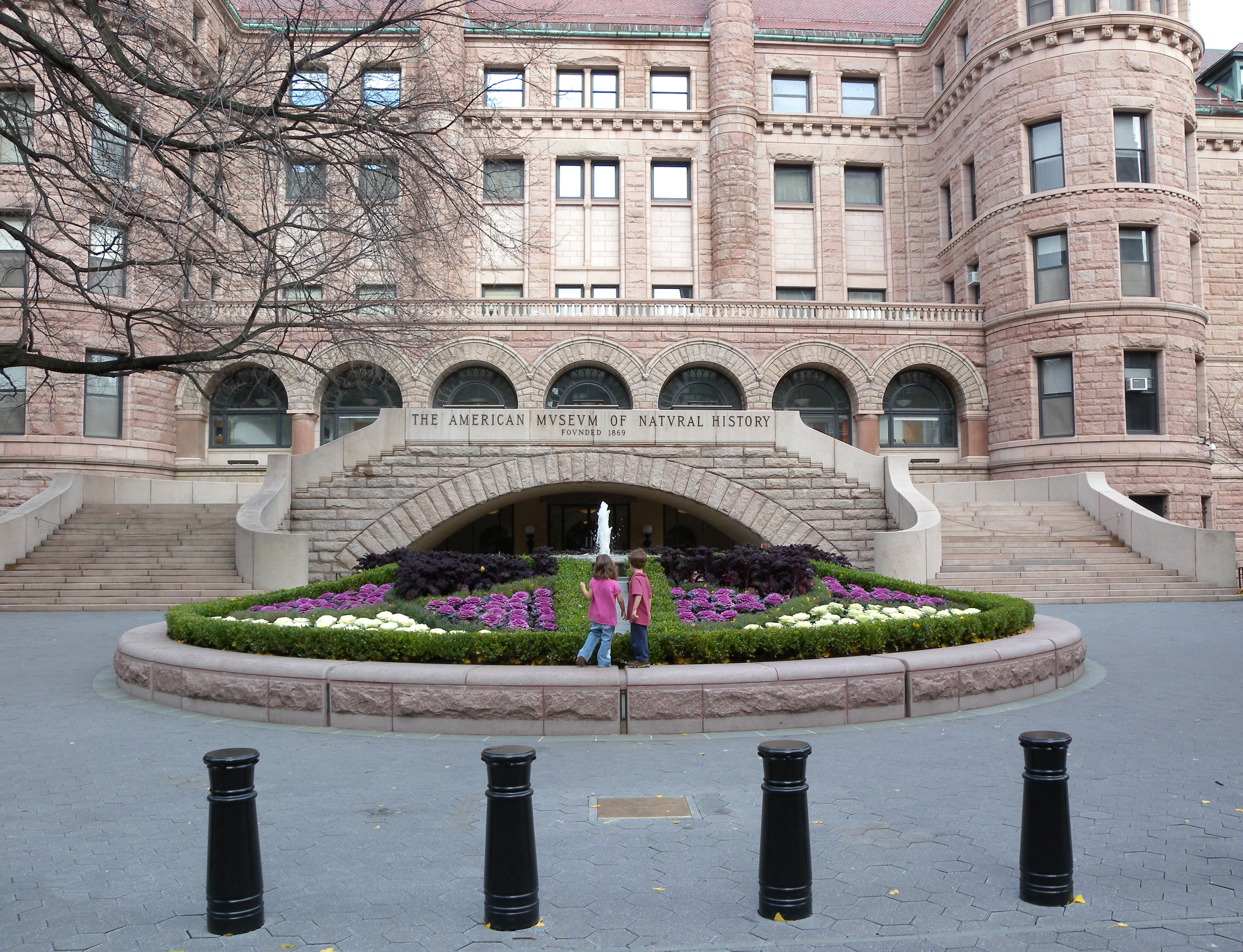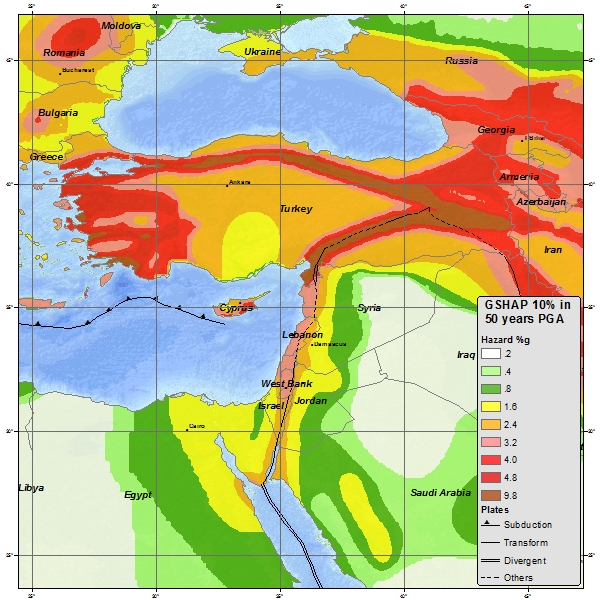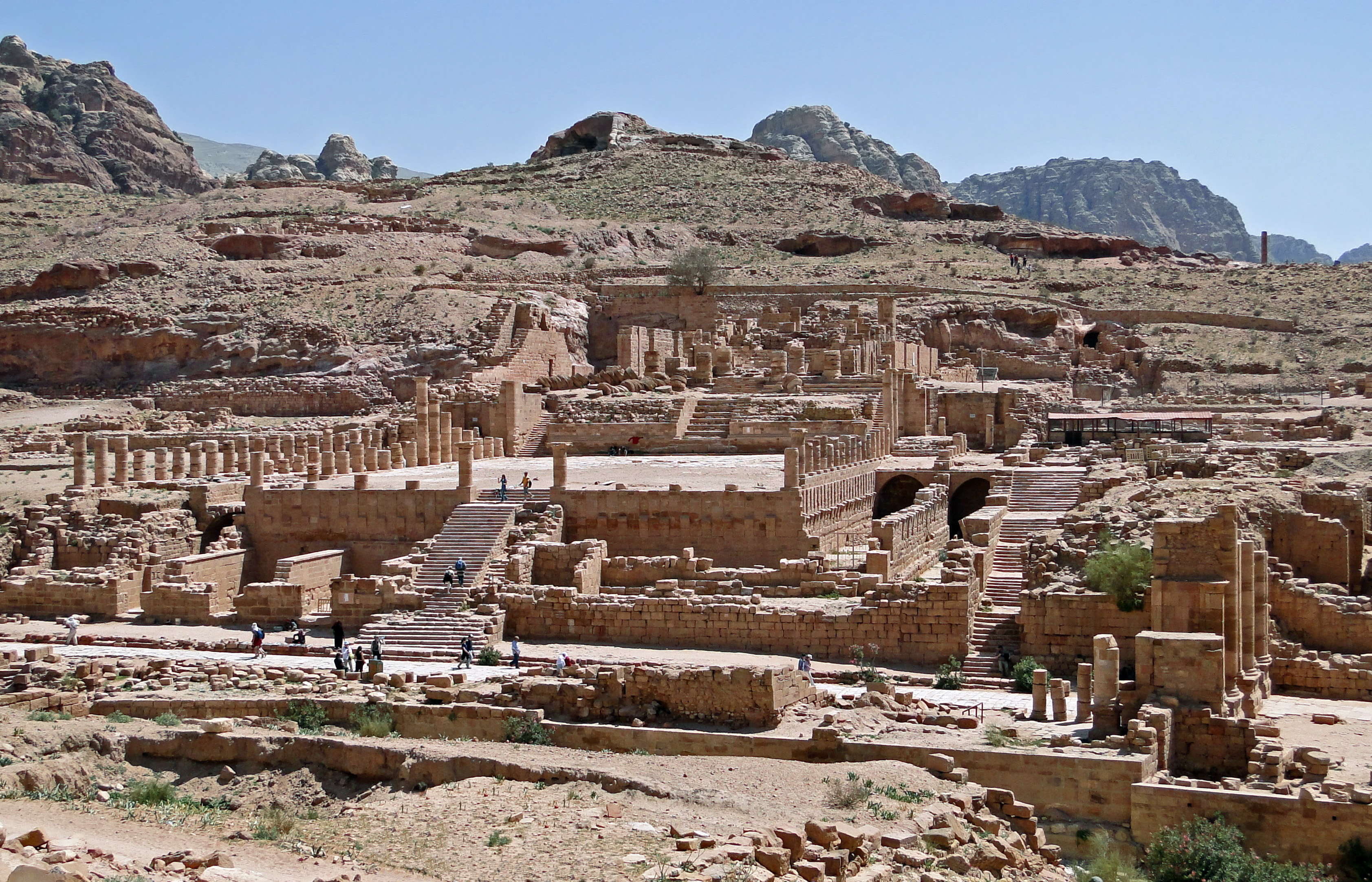|
363 Galilee Earthquake
The Galilee earthquake of 363 was a pair of severe earthquakes that shook the Galilee and nearby regions on May 18 and 19. The maximum perceived intensity for the events was estimated to be X (''Very destructive'') on the European macroseismic scale. The earthquakes occurred on the portion of the Dead Sea Transform (DST) fault system between the Dead Sea and the Gulf of Aqaba. Impact Sepphoris, north-northwest of Nazareth, was severely damaged. Nabratein and the Nabratein synagogue (northeast of Safed) were destroyed. The earthquake may have been responsible for the failure of the plan to rebuild the Temple in Jerusalem with the permission of the Emperor Julian the Apostate, Julian. Petra, in what is now Kingdom of Jordan, Jordan, was fatally Petra#Roman period, damaged. See also *Geography of Israel#Seismic activity *List of historical earthquakes *List of earthquakes in the Levant References Sources * * External links Petra: The Great Earthquake from the American Mus ... [...More Info...] [...Related Items...] OR: [Wikipedia] [Google] [Baidu] |
Seismological Society Of America
The Seismological Society of America (SSA) is an international Learned society, scientific society devoted to the advancement of seismology and the understanding of earthquakes for the benefit of society. Founded in 1906, the society has members throughout the world representing seismologists and other geophysicists, geologists, engineers, insurers, and policy-makers in preparedness and safety. History The society was established by academic, government, and other scientific and engineering professionals in the months following the April 18th 1906 San Francisco earthquake, San Francisco earthquake, with the first meeting of the Board of Directors taking place on December 1, 1906. Publications The Seismological Society of America publishes the ''Bulletin of the Seismological Society of America'' (''BSSA''), a journal of research in earthquake seismology and related disciplines since 1911, and ''Seismological Research Letters'' (''SRL''), which serves as a forum for informal co ... [...More Info...] [...Related Items...] OR: [Wikipedia] [Google] [Baidu] |
Temple In Jerusalem
The Temple in Jerusalem, or alternatively the Holy Temple (; , ), refers to the two religious structures that served as the central places of worship for Israelites and Jews on the modern-day Temple Mount in the Old City of Jerusalem. According to the Hebrew Bible, the Solomon's Temple, First Temple was built in the 10th century BCE, during the reign of Solomon over the Kingdom of Israel (united monarchy), United Kingdom of Israel. It stood until , when it was destroyed during the Siege of Jerusalem (587 BC), Babylonian siege of Jerusalem. Almost a century later, the First Temple was replaced by the Second Temple, which was built after the Neo-Babylonian Empire was conquered by the Achaemenid Empire, Achaemenid Persian Empire. While the Second Temple stood for a longer period of time than the First Temple, it was likewise destroyed during the Siege of Jerusalem (70 CE), Roman siege of Jerusalem in 70 CE. Projects to build the hypothetical "Third Temple" have not come to fruit ... [...More Info...] [...Related Items...] OR: [Wikipedia] [Google] [Baidu] |
Earthquakes In The Levant
An earthquakealso called a quake, tremor, or tembloris the shaking of the Earth's surface resulting from a sudden release of energy in the lithosphere that creates seismic waves. Earthquakes can range in intensity, from those so weak they cannot be felt, to those violent enough to propel objects and people into the air, damage critical infrastructure, and wreak destruction across entire cities. The seismic activity of an area is the frequency, type, and size of earthquakes experienced over a particular time. The seismicity at a particular location in the Earth is the average rate of seismic energy release per unit volume. In its most general sense, the word ''earthquake'' is used to describe any seismic event that generates seismic waves. Earthquakes can occur naturally or be induced by human activities, such as mining, fracking, and nuclear weapons testing. The initial point of rupture is called the hypocenter or focus, while the ground level directly above it is the epicen ... [...More Info...] [...Related Items...] OR: [Wikipedia] [Google] [Baidu] |
History Of Galilee
Galilee (; ; ; ) is a region located in northern Israel and southern Lebanon consisting of two parts: the Upper Galilee (, ; , ) and the Lower Galilee (, ; , ). ''Galilee'' encompasses the area north of the Mount Carmel-Mount Gilboa ridge and south of the east-west section of the Litani River. It extends from the Israeli coastal plain and the shores of the Mediterranean Sea with Acre in the west, to the Jordan Valley to the east; and from the Litani in the north plus a piece bordering on the Golan Heights to Dan at the base of Mount Hermon in the northeast, to Mount Carmel and Mount Gilboa in the south. It includes the plains of the Jezreel Valley north of Jenin and the Beit She'an Valley, the Sea of Galilee, and the Hula Valley. Etymology The region's Hebrew name is , meaning 'district' or 'circle'. The Hebrew form used in Isaiah 8:23 (Isaiah 9:1 in the Christian Old Testament) is in the construct state, leading to "Galilee of the nations", which refers to gentiles who se ... [...More Info...] [...Related Items...] OR: [Wikipedia] [Google] [Baidu] |
360s In The Byzantine Empire '', 2001
{{Numberdis ...
36 may refer to: * 36 (number) * 36 BC * AD 36 * 1936 * 2036 Science * Krypton, a noble gas in the periodic table * 36 Atalante, an asteroid in the asteroid belt Arts and entertainment * ''36'' (TV series), an American sports documentary show * "36", a 2002 song by System of a Down from ''Steal This Album!'' * 36 Quai des Orfèvres (film), a 2004 French crime film * "Thirty Six", a song by Karma to Burn from the album ''Almost Heathen ''Almost Heathen'' is the third studio album by the stoner rock band Karma to Burn. It was released on September 4, 2001, by Spitfire Records. It was the last album released before their seven-year disbandment in 2002. The album was reissued in ... [...More Info...] [...Related Items...] OR: [Wikipedia] [Google] [Baidu] |
American Museum Of Natural History
The American Museum of Natural History (AMNH) is a natural history museum on the Upper West Side of Manhattan in New York City. Located in Theodore Roosevelt Park, across the street from Central Park, the museum complex comprises 21 interconnected buildings housing 45 permanent exhibition halls, in addition to a planetarium and a library. The museum collections contain about 32 million specimens of plants, animals, fungi, fossils, minerals, rocks, meteorites, human remains, and human cultural artifacts, as well as specialized collections for frozen tissue and genomic and astrophysical data, of which only a small fraction can be displayed at any given time. The museum occupies more than . AMNH has a full-time scientific staff of 225, sponsors over 120 special field expeditions each year, and averages about five million visits annually. The AMNH is a private 501(c)(3) organization. The naturalist Albert S. Bickmore devised the idea for the American Museum of Natural History in 1 ... [...More Info...] [...Related Items...] OR: [Wikipedia] [Google] [Baidu] |
List Of Earthquakes In The Levant
This is a list of earthquakes in the Levant, including earthquakes that either had their epicenter in the Levant or caused significant damage in the region. As it is now, the list is focused on events which affected the territories of modern-day Israel, Jordan, Lebanon, Palestine and Syria and to some degree the adjacent areas of south Anatolia, Cyprus island and the Sinai Peninsula (modern Turkey, Cyprus and Egypt). Seismic hazard The Jordan Rift Valley is the result of tectonic movements within the Dead Sea Transform (DSF) fault system. The DSF forms the transform boundary between the African plate to the west and the Arabian plate to the east. The Golan Heights and all of Transjordan are part of the Arabian plate, while the Galilee, The Palestinian territories, coastal plain and Negev along with the Sinai Peninsula are on the African plate. This tectonic disposition leads to relatively high seismic activity in the region. Earthquakes The region has experienced many ... [...More Info...] [...Related Items...] OR: [Wikipedia] [Google] [Baidu] |
List Of Historical Earthquakes
Historical earthquakes is a list of significant earthquakes known to have occurred prior to the early 20th century. As the events listed here occurred before routine instrumental recordings, they rely mainly on the analysis of written sources, observations of shaking objects or animal behavior during earthquakes, religious/traditional beliefs about earthquakes (e.g. "God's punishment"). or the use of palaeoseismological techniques. There is often significant uncertainty in locations and magnitudes, and sometimes dates for each earthquakes. The number of fatalities is also often highly uncertain, particularly for the older events. Pre-11th century 11th–16th centuries 17th century 18th century 19th century Source for all events with 'USGS' labelled as the source United States Geological Survey (USGS''Note: Magnitudes are generally estimations from intensity data. When no magnitude was available, the Mercalli intensity scale, maximum intensity, written as a Roman num ... [...More Info...] [...Related Items...] OR: [Wikipedia] [Google] [Baidu] |
Geography Of Israel
The geography of Israel is very diverse, with desert conditions in the south, and snow-capped mountains in the north. Israel is located at the eastern end of the Mediterranean Sea in West Asia. It is bounded to the north by Lebanon, the northeast by Syria, the east by Jordan and the West Bank, and to the southwest by Egypt. To the west of Israel is the Mediterranean Sea, which makes up the majority of Israel's coastline, and the Gaza Strip. Israel has a small coastline on the Red Sea in the south. Israel's area is approximately , which includes of inland water. Israel stretches from north to south, and its width ranges from at its widest point to at its narrowest point. It has an Exclusive Economic Zone of . The Israeli-occupied territories include the West Bank, , East Jerusalem, and the Golan Heights, . Geographical features in these territories will be noted as such. Of these areas, Israel has annexed East Jerusalem and the Golan Heights, an act not recognized by the ... [...More Info...] [...Related Items...] OR: [Wikipedia] [Google] [Baidu] |
Kingdom Of Jordan
Jordan, officially the Hashemite Kingdom of Jordan, is a country in the Southern Levant region of West Asia. Jordan is bordered by Syria to the north, Iraq to the east, Saudi Arabia to the south, and Israel and the occupied Palestinian territories to the west. The Jordan River, flowing into the Dead Sea, is located along the country's western border within the Jordan Rift Valley. Jordan has a small coastline along the Red Sea in its southwest, separated by the Gulf of Aqaba from Egypt. Amman is the country's capital and largest city, as well as the most populous city in the Levant. Inhabited by humans since the Paleolithic period, three kingdoms developed in Transjordan during the Iron Age: Ammon, Moab and Edom. In the third century BC, the Arab Nabataeans established their kingdom centered in Petra. The Greco-Roman period saw the establishment of several cities in Transjordan that comprised the Decapolis. Later, after the end of Byzantine rule, the region became p ... [...More Info...] [...Related Items...] OR: [Wikipedia] [Google] [Baidu] |
Petra
Petra (; "Rock"), originally known to its inhabitants as Raqmu (Nabataean Aramaic, Nabataean: or , *''Raqēmō''), is an ancient city and archaeological site in southern Jordan. Famous for its rock-cut architecture and water conduit systems, Petra is also called the "Rose City" because of the colour of the sandstone from which it is carved. The city is one of the New 7 Wonders of the World and a UNESCO World Heritage Site. The area around Petra has been inhabited from as early as 7000 BC, and was settled by the Nabataeans, a nomadic Arab people, in the 4th century BC. Petra would later become the capital city of the Nabataean Kingdom in the second century BC. The Nabataeans invested in Petra's proximity to the incense trade routes by establishing it as a major regional trading hub, which gained them considerable revenue. Unlike their enemies, the Nabataeans were accustomed to living in the barren deserts and thus were able to defend their kingdom. They were particularly sk ... [...More Info...] [...Related Items...] OR: [Wikipedia] [Google] [Baidu] |



